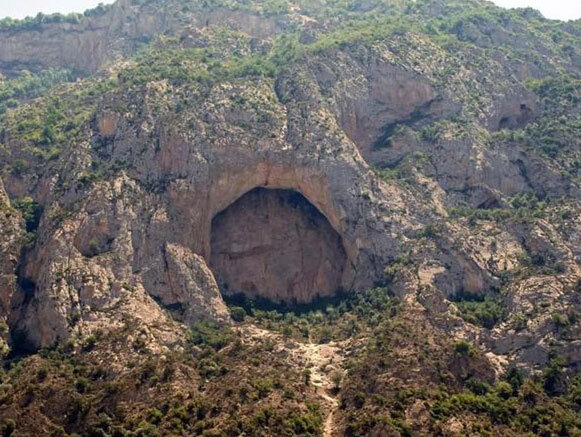Historical cave now enjoys more protection against damage

TEHRAN – A series of fences have been set up to protect the historical cave of Espahbod Khorshid and its surrounding areas against potential damage, the director of the historical site has announced.
The conservation project, which also involved evacuating all mining machinery from the historical area, has recently come to an end after months of hard work and pursuit, Mehdi Abedini said on Saturday.
The fencing also aims at preventing cattle from entering the area, the official added.
The ancient cave is situated in the northern Mazandaran province, which is bounded by the Caspian Sea.
The project was implemented in collaboration with the Department of Natural Resources and Watershed Management of Savadkuh as well some non-governmental groups (NGOs), he explained.
Exploring a cave may not be on the “to-do list” of travelers in Iran. However, Karaftu, Ali-Sadr and Quri Qaleh, and Katale-Khor are amongst the most visited caves.
Iran is geologically a part of the Alpine-Himalayan organic belt. According to Britannica Encyclopedia, the enigmatic evidence of human presence on the Iranian plateau is as early as Lower Paleolithic times.
The first well-documented evidence of human habitation is in deposits from several excavated cave and rock-shelter sites, located mainly in the Zagros Mountains of western Iran and dated to Middle Paleolithic or Mousterian times (c. 100,000 BC).
Soaked in a vibrant history, Mazandaran (also known as Tabarestan) was a cradle of civilization since the beginning of the first millennium BC. According to Britannica Encyclopedia, it was almost overrun in about 720 CE by the Arab raiders.
Its insecure eastern and southeastern borders were crossed by Mongol invaders in the 13th and 14th centuries. Cossacks attacked the region in 1668 but were repulsed. It was ceded to the Russian Empire by a treaty in 1723, but the Russians were never secure in their occupation. The area was restored to Iran under the Qajar dynasty. The northern section of the region consists of a lowland alongside the Caspian and an upland along the northern slopes of the Alborz Mountains.
ABU/AFM
Leave a Comment